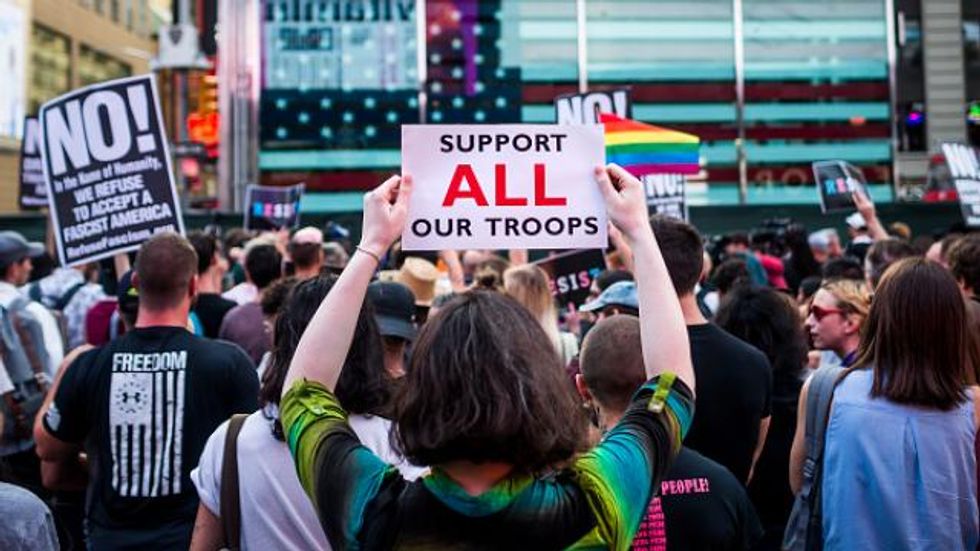On the night of March 23, the Trump administration announced the ban of transgender people from the military once again, but this time, a detailed report was released with the guidelines as to whom can and cannot serve.
The memo, signed by Trump, states that “transgender persons with a history or diagnosis of gender dysphoria – individuals who the policies state may require substantial medical treatment, including medications and surgery – are disqualified from military service.” This is the very vague summary of the 46-page Department of Defense Report concerning this topic.
This lengthy report lays out the guidelines, in extreme detail, which transgender citizens are considered fit to serve. There are three sections regarding various situations: those “without a history or diagnosis of gender dysphoria,” those who have begun their physical transition, and those who have “a history or diagnosis of gender dysphoria.”
Firstly, according to Psychology Today, “the term transgender refers to people whose sense of their own gender differs from what would be expected based on the sex characteristics with which they are born.” While gender dysphoria is defined “by strong, persistent feelings of identification with the opposite gender and discomfort with one's own assigned sex that results in significant distress or impairment.”
One way to reduce these feelings of distress is through a “three-phase treatment - psychological, surgical and hormonal.”
Psychological treatment can “facilitate self-comfort” and through this, individuals can decide whether they wish to undergo various physical treatments, such as Hormone Replacement Therapy (HRT) and gender-affirming surgeries; not every transgender individual feels the need to physically transition and if they do, sometimes they undergo only HRT or only surgery.
For transgender individuals who don’t have gender dysphoria on their record, they “must serve, like everyone else, in their biological sex.”
Meanwhile those who have already begun their physical transition (i.e. have undergone gender-affirming surgeries or HRT) “are disqualified” allowing them in the military would “undermine unit cohesion, as well as good order and discipline, by blurring the clear lines that demarcate male and female standards and policies……and lead to disproportionate costs.”
As for those who do have a history with gender dysphoria, they can only serve “under certain limited circumstances,” such if “they can demonstrate 36 consecutive months of stability immediately preceding their application.”
In short, this document labels anyone who has ever suffered from gender dysphoria to not be “able-bodied,” which is one of the many problems buried in these 46 pages. Forcing someone who identifies as transgender to serve as their biological sex is ethically wrong. They’re being forced to exist as somebody that they aren’t.
We, as a society, should be grateful for every individual who wants to enlist in our military to defend this country. We don’t have the right to choose what “type” of transgender individual puts their lives on the line. We shouldn’t be working towards segregating and banning minorities from basic American rights, we should continue to fight to keep these rights.























